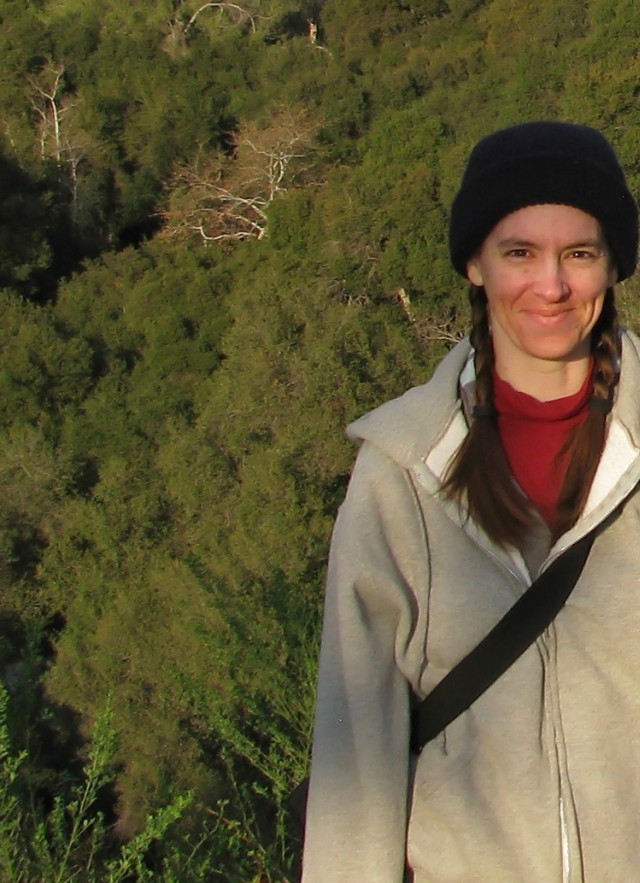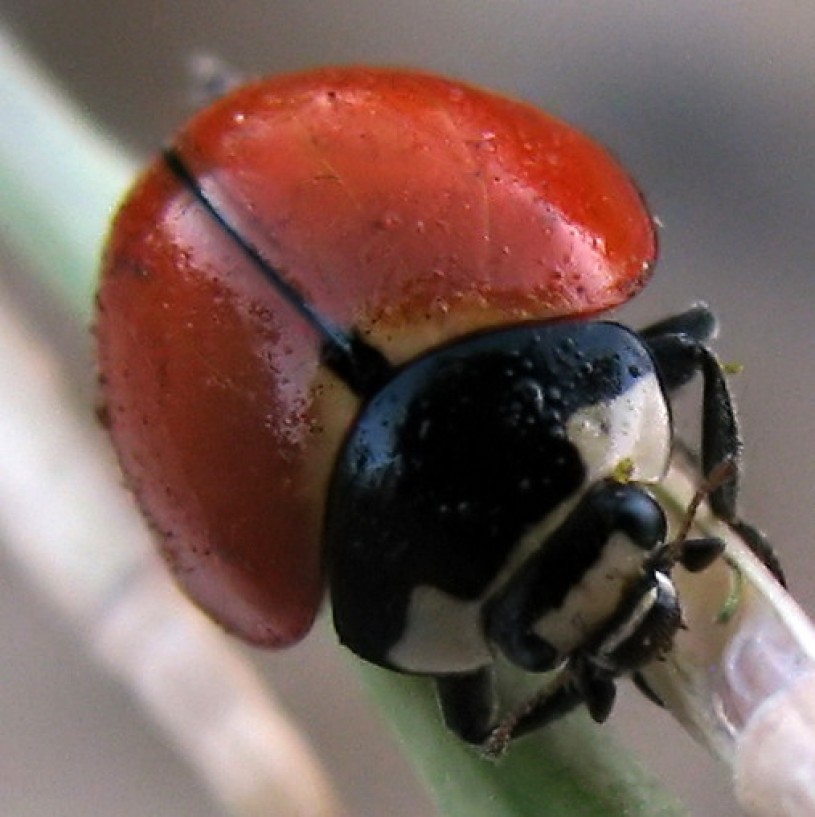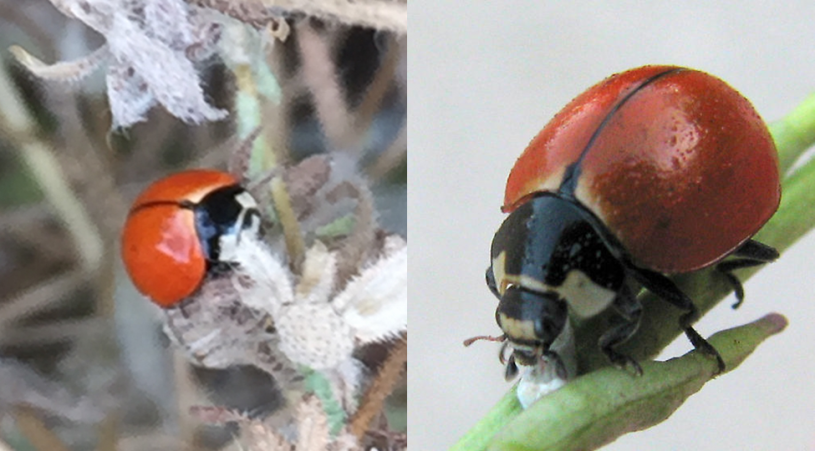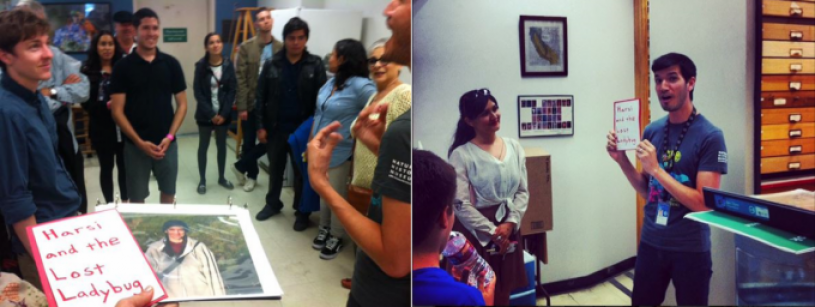Rare Nine-Spotted Ladybug Found in L.A.!
"Did I just discover a ‘lost ladybug’ here in the Nature Gardens?”

Published June 17, 2015
During Bug Fair, I found a ladybug in the museum’s Nature Gardens, that didn’t look familiar. It didn’t have any spots, but it somehow looked different than all the other no-spotted ladybugs I’d seen before. I took its photo, posted it to our Nature Gardens Survey on iNaturalist, and then totally forgot about it.

It wasn’t until a few weeks later, while I was preparing for a behind-the-scenes tour in entomology that something made me come back to that photograph. I was planning to talk about a big discovery made by a community scientist back in 2009—the time Harsi Parker discovered a rare nine-spotted ladybug in L.A.
Today Harsi lives in Washington State, but back in 2009, Harsi lived in Claremont, right on the edge of L.A. and San Bernardino Counties. On a Summer day in 2009, Harsi went for a walk in Claremont’s Webb Canyon. As she passed a stand of mustard plants, she noticed an insect out of the corner of her eye. She looked closer and realized it was a ladybug—one she had never seen before. Not having her camera on her, and worrying she’d never find the ladybug again if she ran home to get it, Harsi picked the sprig of invasive mustard (she wouldn’t have done this if it was a native flower). She slowly and carefully walked the sprig with its precious cargo all the way back to her house. Once she was home, Harsi immediately took photos of the ladybug and began searching through her field guides to try and identify it. When she turned to the page with the nine-spotted ladybug, Coccinella novemnotata, Harsi got really excited—these are very rare ladybugs.
Nine-spotted ladybugs are native to North America, but their population numbers declined tremendously in the 1970s and 80s. Numbers declined so low that many scientists thought they were locally extinct in many parts of the U.S.
Knowing that nine-spotted ladybugs are rare, Harsi realized she had to share her find with the scientific community. She posted her photo to Cornell’s Lost Ladybug Project and promptly got confirmation that her ladybug was indeed a rare nine-spotted specimen. This was only the second time this lost ladybug had been reported to the project for the entire state of California!
While doing my research about Harsi’s story, I got a chance to really study her nine-spotted ladybug photographs. As I looked at them closely I realized they reminded me of the ladybug I had found in the Nature Gardens during Bug Fair.

I put our photos side by side, and noticed that they both had a black line running down their back, they both had the same black-and-white pattern on the pronotum (the shield-like covering above a ladybug’s head), and they had the same white line between their eyes. Just like Harsi, I got really excited, “Did I just discover a ‘lost ladybug’ here in the Nature Gardens?”
Turns out my ladybug was a lost ladybug too! Within 24 hours, staff from Cornell responded to my picture and told me I had found the fourth nine-spotted ladybug in California. I couldn’t believe it! The odds of me finding a nine-spotted ladybug are small, but finding one while researching another nine-spotted finding was just too incredible.
I emailed Harsi to let her know what was taking place and she was thrilled. I told Harsi that our photos are forever linked, because if I hadn’t been researching her story then I wouldn’t have realized what I had seen. This goes to show that the power of community science is not only helping scientists collect valuable data points, but it is also connecting people through science and helping them to make big discoveries about the world we live in.

Feeling inspired? We encourage all of you to look for ladybugs this Summer. Take their photos and send them to us at nature@nhm.org. You may not find a nine-spotted ladybug, but you will be contributing to our understanding of nature in L.A.